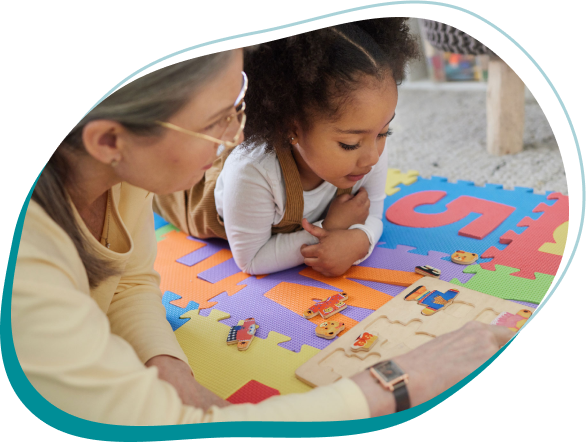
Parents, Do You Have Questions?
We know that joining the New York Therapy Placement Services (NYTPS) family comes with a variety of questions. Whether you are concerned about your child’s development, therapy needs, or what services we can offer, New York Therapy is here to help you feel more at ease.

Speech Therapy (ST)
What is speech therapy for children?
Speech therapy focuses on improving communication skills, including articulation, language development, fluency, and social communication. It helps children express themselves effectively.
How do I know if my child needs speech therapy?
If your child struggles with pronunciation, has a limited vocabulary, has difficulty following directions, or avoids social interaction, it may be beneficial to seek a speech evaluation.
What does an ST evaluation look like, and what can I expect?
A speech evaluation generally involves discussing your child’s history, observing their communication skills in various contexts, and conducting standardized assessments. The therapist will create a personalized plan based on their findings.
What will a speech therapy session look like?
Sessions are typically engaging and play-based, incorporating games, storytelling, and exercises tailored to your child’s specific communication goals.
How long does speech therapy take to show results?
Progress varies by child and their specific needs, but many families notice improvements within a few months of consistent therapy.
How can I help my child with speech development at home?
Encourage conversations, read together daily, play interactive games, and model correct pronunciation. Use open-ended questions to foster language skills.
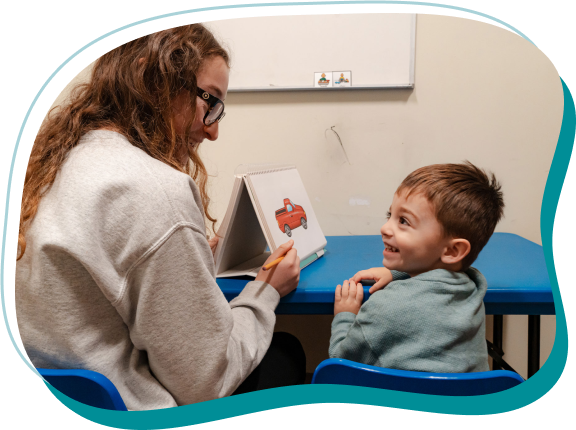
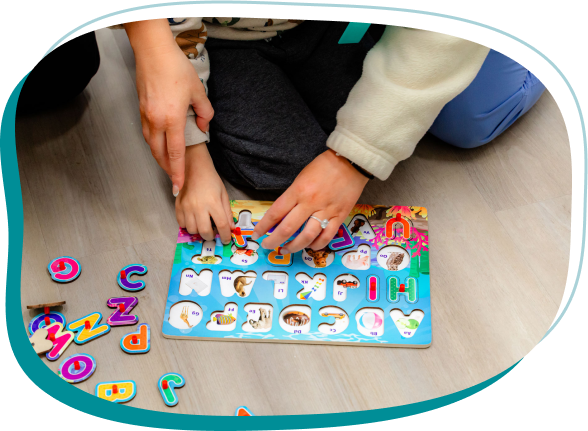

Occupational Therapy (OT)
What is occupational therapy for children?
Occupational therapy helps children develop the skills they need for daily activities, including fine motor skills, self-care, and social interactions. It focuses on promoting independence and enhancing quality of life.
What types of issues can OT address?
OT can help with a range of issues, including sensory processing disorders, developmental delays, autism spectrum disorders, physical disabilities, and difficulties with self-care tasks.
How do I know if my child needs occupational therapy?
Signs may include difficulty with fine motor skills (e.g., holding a pencil), trouble with self-care tasks (e.g., dressing or feeding), challenges in social situations, or problems with sensory regulation. A professional evaluation can provide clarity.
What is an OT evaluation, and what can I expect?
An OT evaluation typically includes interviews with parents, observation of the child, and standardized assessments to evaluate various skills. Expect a friendly environment where your child will engage in activities that help the therapist assess their abilities and needs.
How often will my child need OT sessions?
The frequency of sessions varies based on individual needs. Typically, children may attend once a week, but this can be adjusted depending on progress and specific goals.
What can I do at home to support my child’s OT goals?
Engage in activities that promote fine motor skills, such as arts and crafts, puzzles, or simple household tasks. Encourage self-care routines and sensory play to enhance their development.

Physical Therapy (PT)
What is physical therapy for children?
Physical therapy helps children improve their movement, strength, coordination, and overall physical function. It also addresses mobility issues and enhances motor skills.
What types of conditions can PT address?
PT can assist with a variety of conditions, including developmental delays, injuries, congenital disorders, neurological conditions, and issues resulting from surgery.
How can I tell if my child needs physical therapy?
Signs may include difficulty with balance, coordination, walking, or running and delayed gross motor skills milestones. A professional assessment can help determine the need for PT.
What is a PT evaluation, and what can I expect?
A PT evaluation includes discussions about your child’s medical history, a physical assessment to observe movement patterns and strength, and standardized tests. The therapist will work to understand your child’s abilities and create a tailored treatment plan.
How long does physical therapy typically take?
The duration varies depending on the child’s needs and goals. Some children may need just a few sessions, while others may require ongoing therapy for several months.
What can I do to support my child’s physical therapy at home?
Encourage active play, participate in fun physical activities together, and practice the exercises provided by your child’s therapist to reinforce skills learned during sessions.
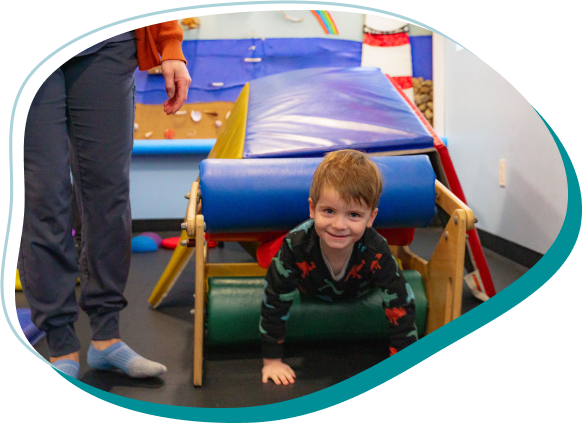
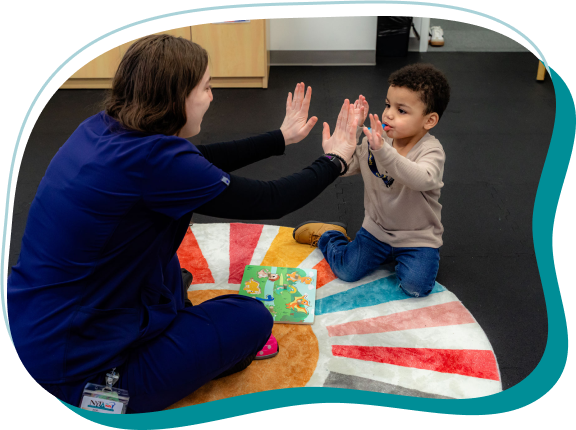

ABA Therapy (ABA)
What is ABA Therapy?
ABA (Applied Behavior Analysis) is a therapy based on the science of learning and behavior. It helps children with Autism Spectrum Disorder (ASD) and other developmental disorders improve communication, social skills, and behavior through structured interventions.
What types of behaviors does ABA Therapy address?
ABA Therapy focuses on improving social skills, communication, and adaptive behaviors, such as completing tasks, following instructions, and reducing problematic behaviors like aggression or self-injury.
How does ABA Therapy work?
ABA Therapy breaks down skills into small, manageable steps and uses positive reinforcement to encourage desired behaviors. Therapists track progress through data collection, making adjustments to the intervention plan as needed to help children reach their individualized goals.
How do I know if my child needs ABA Therapy?
If your child has challenges with communication, social interaction, or repetitive behaviors or exhibits developmental delays related to Autism, New York Therapy can conduct an evaluation to help determine if this therapy would be beneficial.
What is an ABA evaluation, and what can I expect?
An ABA evaluation involves interviews with the family, observation of the child, and assessments to identify their strengths and areas that need improvement. The therapist will use the results to create an individualized plan.
How often is ABA Therapy provided?
The frequency of ABA Therapy depends on the child’s individual needs and the treatment plan. It can range from a few hours per week to more intensive programs that include multiple hours per day. The goal is to provide consistent, meaningful intervention to create lasting behavior change
How long does ABA Therapy typically take?
The length of ABA Therapy depends on the child’s individual needs and goals. Some children benefit from a few months of therapy, while others may require ongoing support for several years. The frequency of therapy can range from a few hours a week to more intensive programs.
Who provides ABA Therapy?
ABA Therapy is typically provided by trained professionals known as Behavior Therapists or Board Certified Behavior Analysts (BCBAs). BCBAs oversee the development of treatment plans, while Behavior Therapists work directly with children to implement the interventions.
What can I do at home to support my child’s ABA Therapy goals?
You can reinforce the skills learned during therapy by practicing them at home. Your child’s ABA therapist will provide guidance on activities and techniques that promote progress outside of sessions.
Is ABA Therapy covered by insurance?
New York Therapy accepts most insurance plans for ABA Therapy, particularly for children diagnosed with Autism Spectrum Disorder (ASD). Coverage may vary depending on your insurance provider and plan.

SEIT Services
What is SEIT?
SEIT (Special Education Itinerant Teacher) services provide individualized support to preschool children with special needs. A SEIT works directly with the child in their preschool, daycare, or home setting to help them achieve their developmental and educational goals.
Who qualifies for SEIT services?
Children aged 3 to 5 who have been evaluated and found eligible for special education services through their school district’s Committee on Preschool Special Education (CPSE) may qualify for SEIT services.
What does a SEIT do?
A SEIT works with children on skills related to communication, social interaction, behavior management, and academic readiness. They collaborate with families, teachers, and other service providers to create an inclusive learning environment for the child.
Services are provided on an itinerant basis, meaning the SEIT travels to the educational setting mandated by the IEP. The primary goal of SEIT services is to provide special education support(s) to help the student in a regular education classroom or home setting. The SEIT works on the goals and objectives mandated by the IEP. The SEIT is also a resource and guide for the classroom staff and family and will provide any proactive strategies that have been implemented and can be carried over throughout the child’s day.
Where are SEIT services provided?
SEIT services can be provided in various settings, including the child’s preschool, daycare, or home. The goal is to support the child in their natural learning environment, integrating therapy and educational support into their daily routine.
How often will my child receive SEIT services?
The frequency of SEIT services is based on the child’s Individualized Education Program (IEP) and their specific needs. Sessions can range from a few hours per week to more intensive, daily support. As per NYSED, the minimum services are 2×60 min per week.
How can I support my child’s SEIT goals at home?
You can support your child’s progress by maintaining open communication with the SEIT and reinforcing session strategies. Engaging in activities that promote your child’s learning and social-emotional development at home is also beneficial.
